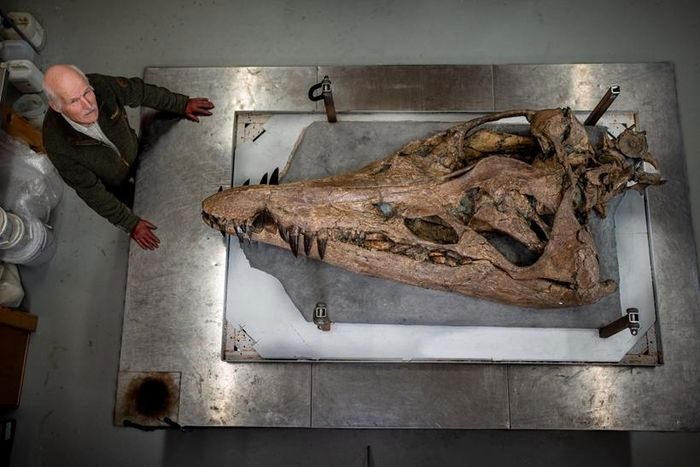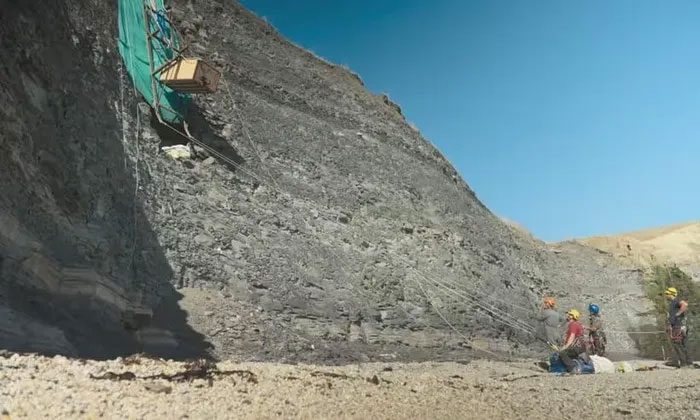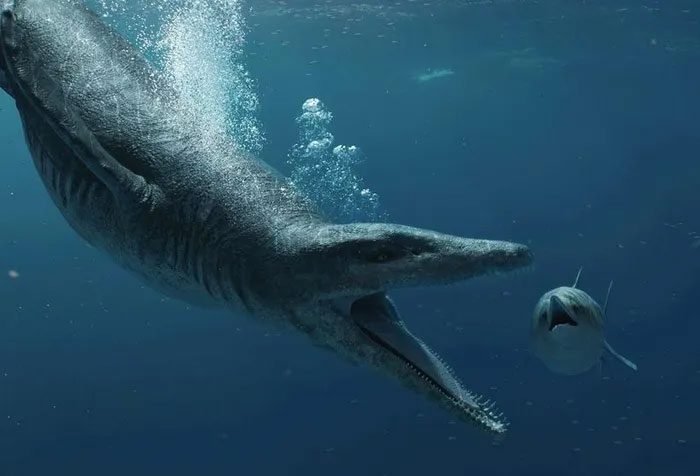The skull of a gigantic sea monster, identified as belonging to the Pliosaur species, has been unearthed in a recent discovery on a steep 15-meter cliff in Dorset, near Kimmeridge Bay in southwestern England, a site renowned for its Jurassic coastline, which is recognized as a UNESCO World Heritage site.
The fossil was discovered by Philip Jacobs, a passionate fossil hunter who has been exploring the Jurassic coast for marine reptile fossils for decades. He contacted local paleontologist Steve Etches to assist with the excavation.

Paleontologist Steve Etches with Pliosaurus skull. (Photo: Jonathan Amos).
Pliosaurs were among the most ferocious predators of the Jurassic period, dominating the ancient oceans 150 million years ago.
Paleontologist Etches described this fossil as one of the best he has ever studied, perfectly preserved in pristine condition.

Biologists rappel down to excavate fossils on the steep cliff at the Dorset coast, England. (Photo: The Guardian).
The massive skull measures 2 meters in length, showcasing 130 sharp teeth capable of inflicting fatal bites. With a body length of 10-12 meters, the Pliosaur was a dominant predator of the oceans, often likened to the T. rex of the waters.
From this rare and perfectly preserved fossil, scientists predict they will gain new insights into the behavior and biological features of the Pliosaur’s hunting abilities.

Illustration of the Pliosaur species. (Photo: Jonathan Amos).
Paleontologist Etches plans to display the skull at his museum in Kimmeridge, England, while emphasizing the urgency of completing the excavation to search for the remaining skeleton, as the cliff is rapidly eroding and may collapse into the sea.
The research team believes that the entire Pliosaur could still be embedded within the cliff, not just the skull, as this part provides more information than any other part of the creature’s skeleton.


















































